#thegreeksaladproject
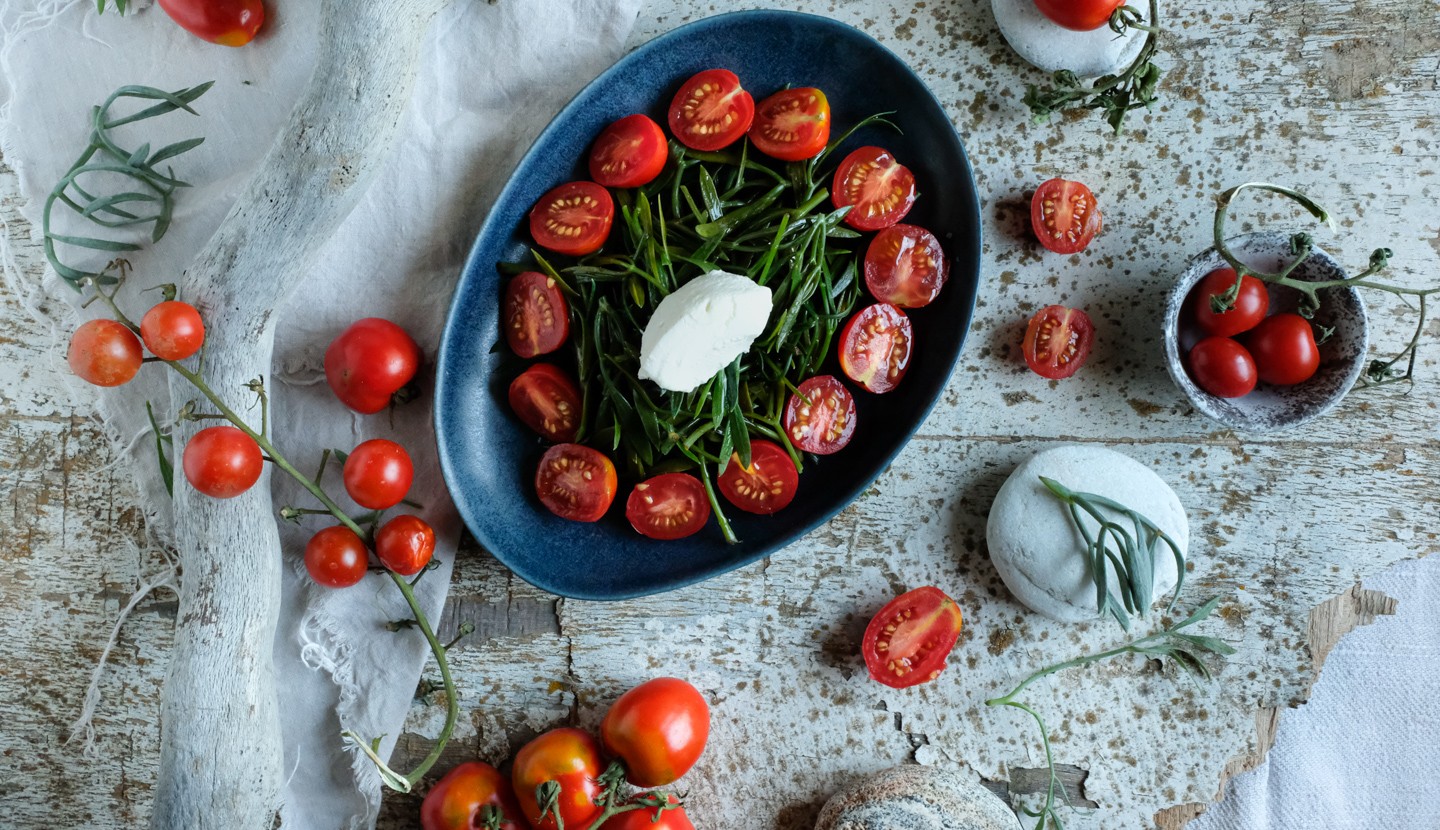
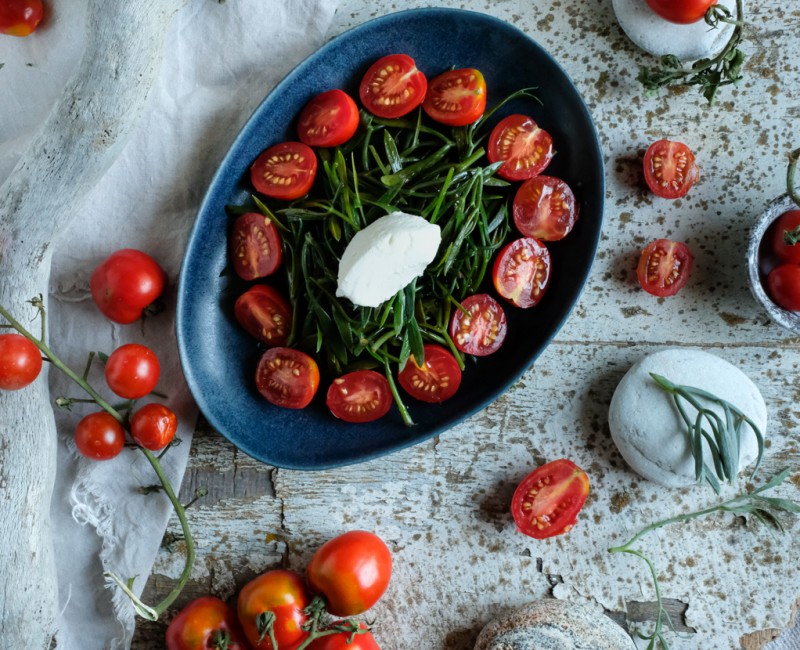
It’s the world’s most gorgeous salad, made with the most wonderful, delicious vegetables. It’s a signature summer dish, reminding us of beautiful moments, vacations, taverns by the beach, tables on the sand, the sea breeze.. And most of all, impeccable flavours! All the bread dives trying to soak up the delicious tomato and olive oil juices prove just that! It’s the world-famous Greek Salad, also known as “horiatiki”!
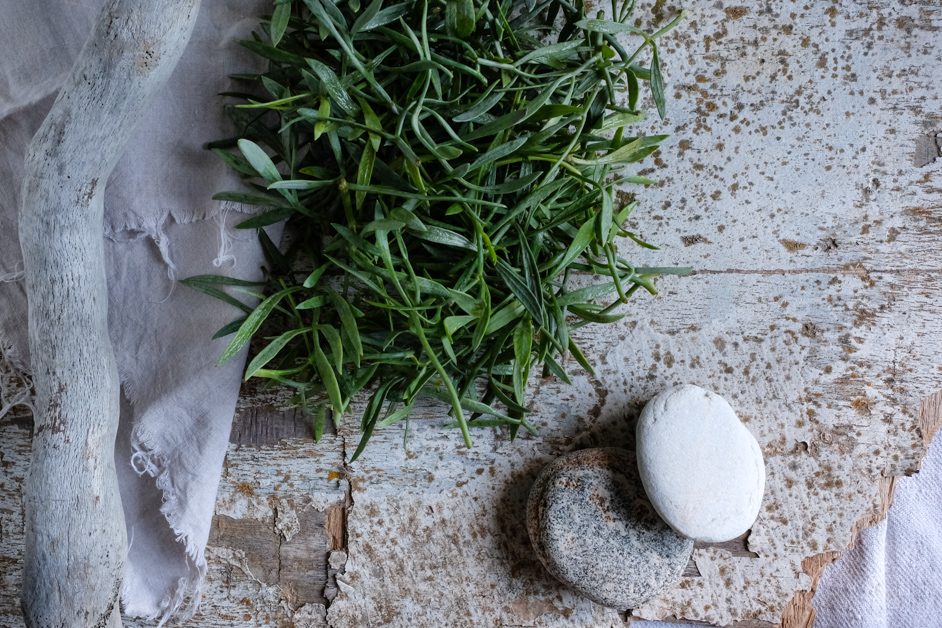
The Greek salad is naturally linked with summer, the sun, the vivid red piece of tomato you hungrily bite after a few hours of swimming and sunbathing. It’s the unbeatable combination of ingredients that fills up your senses and makes you feel complete. And a taste so refreshing and light, healthy and full of aroma.
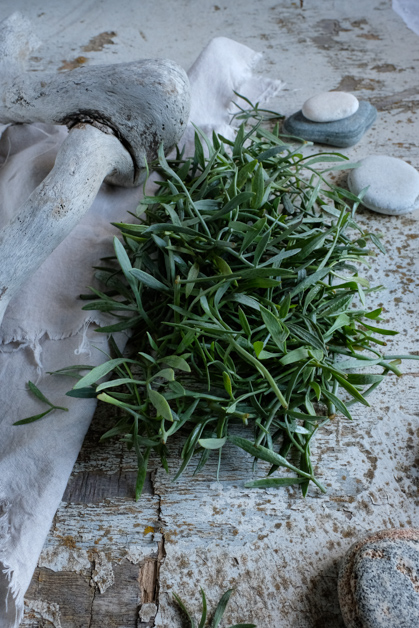
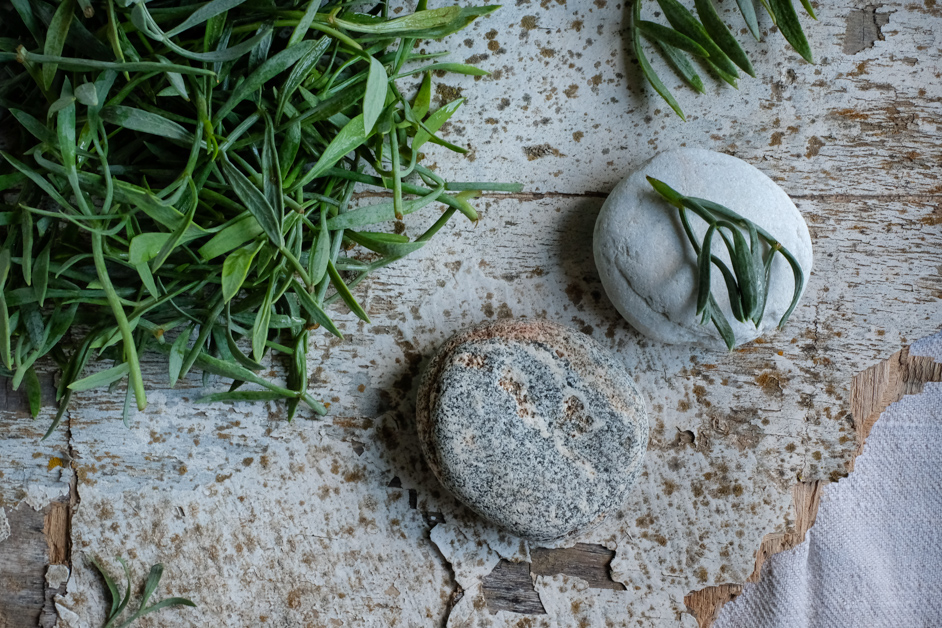
The word “horiatiki” is one of those words that tourists always learn how to pronounce before they leave Greece, along with “gia sou”, “ti kanis”, “efharisto”.. It’s consisted of seven main, humble ingredients. Tomato, cucumber, onion, green pepper, olives and feta cheese. As simple as that. Of course, it’s finished with a generous portion of extra virgin olive oil, a bit of vinegar, oregano and sea salt flakes. Heavenly.. You can’t find this anywhere else but here!
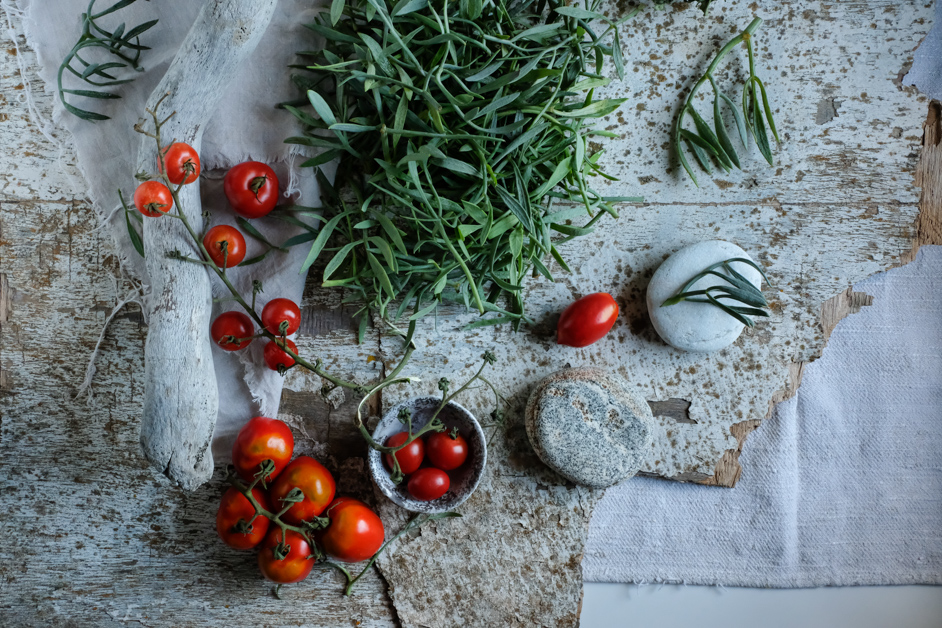
And I truly believe that. Having the chance to visit my daughter when she studied abroad, I cooked with her quite often and tried so many tasteless and bland vegetables. It’s just not the same. The sun and the climate in the south make all the difference and upgrade the quality and taste of vegetables.
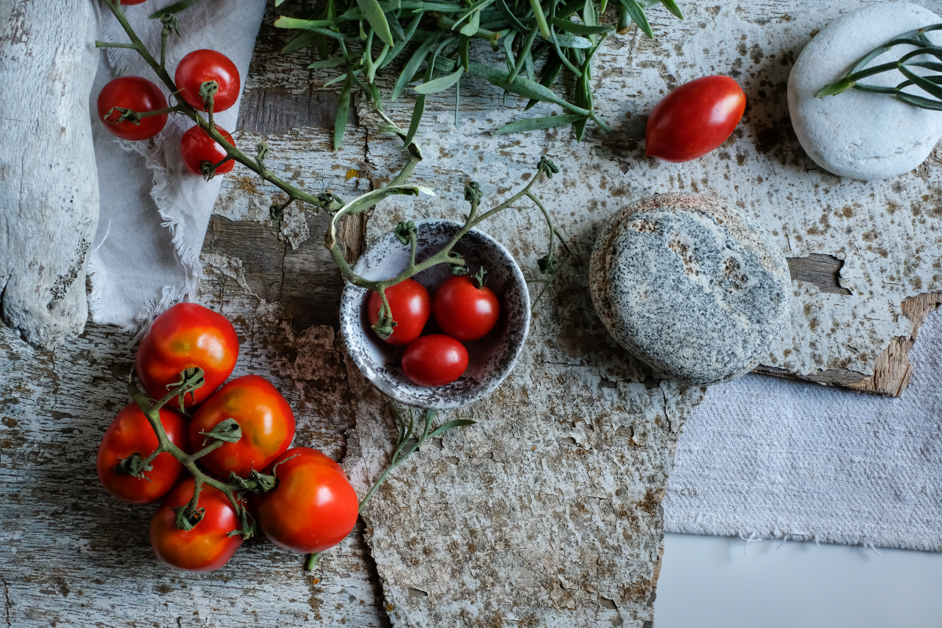
Laura Santtini, writer and chef, also known as “the umami queen”, is an expert in umami. Umami is the 5th taste after sweet, salty, sour and bitter. It was first coined in 1908 by a Japanese scientist but was scientifically identified in 2000. Umami means deliciousness. It’s described as a soft sensation, with a mild aftertaste and depth. It’s connected with the essence of deliciousness, ultimate pleasure, taste perfection. It’s a distinct taste that can showcase any other taste when combined. There are many umami-rich foods! And when these foods are combined, they can create the ultimate sensation. Three of the ingredients in a Greek salad are umami-rich. Olives, cheese and tomato. No wonder why it’s so delicious!
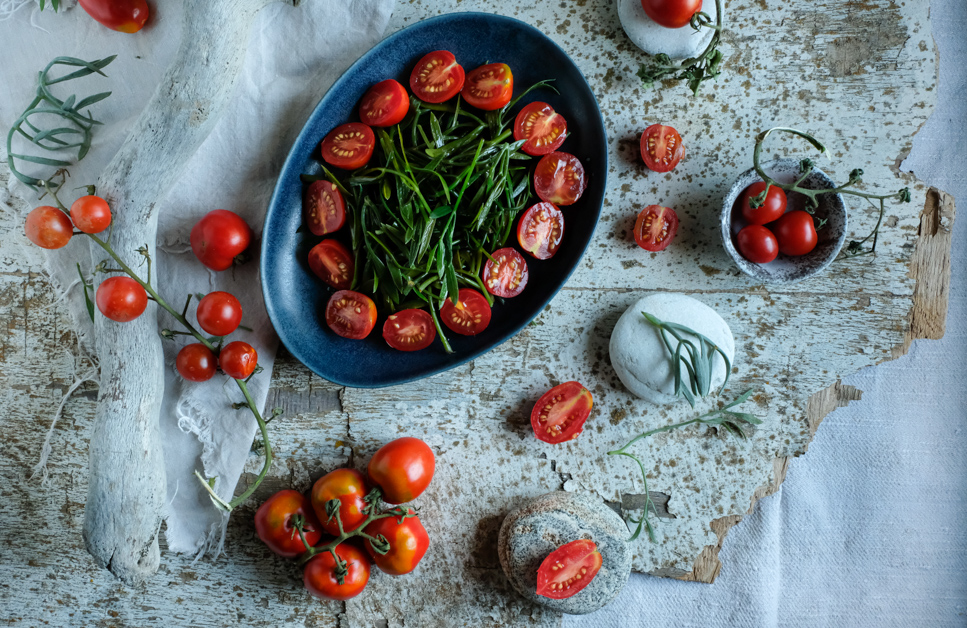
]
What I’ve always been impressed by, which is also why I came up with #thegreeksaladproject, is the various different ingredients that can be added to a Greek salad, depending on which part of Greece you find yourself at and what local products can be used to enrich the dish and give it a unique, local touch. The inspiration and love the cook puts into the preparation of the dish is, of course, always important!
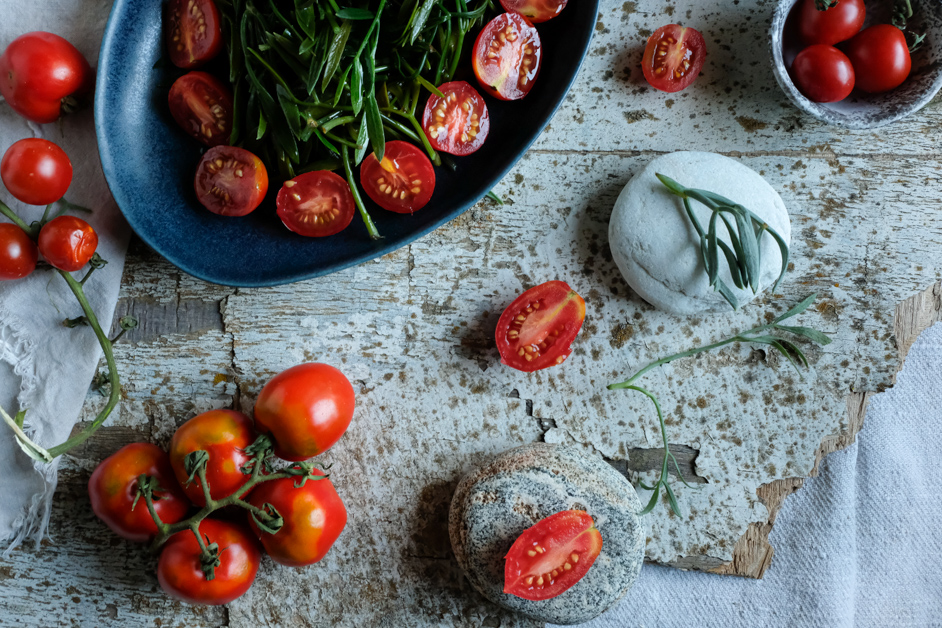
Thus, depending on the location, ingredients may be added or replaced.. In Cyclades, feta cheese can be replaced by a big spoon of kopanisti cheese (a well-known, local, soft cheese) or maybe caper and dakos can be included in the dish as well. In Crete, dakos is often made with carob that gives a completely different, unique taste! Sometimes the Greek salad can be served with boiled eggs while some people like to add basil or spearmint and watermelon. The only ingredient that never changes is tomato, the Greek salad’s great protagonist!
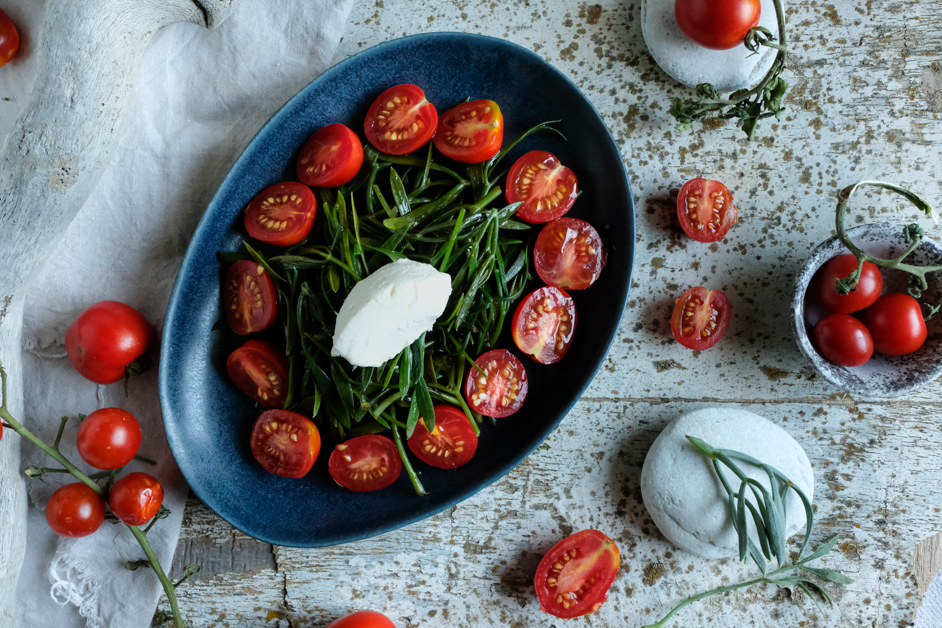
Whether it’s cherry tomatoes, yellow tomatoes or any other kind, they remain juicy and delicious. Needless to say that “horiatiki” is also a very healthy and nutritious salad. It’s so filling that it can be served as main course. The combination of vegetables in a Greek salad is considered a superfood. It’s low-fat but rich in protein, carbs and fibres. We’ll need a whole new post to list all the nutrients each vegetable contains. The presence of olive oil is worth mentioning though, since it upgrades the nutritional value of the dish even more!
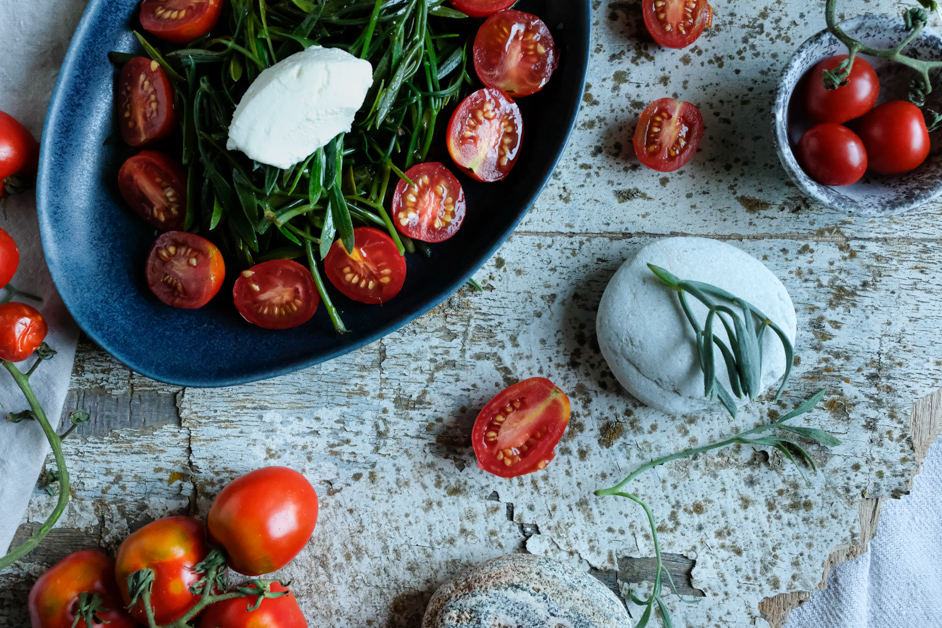
My goal is to gather a few of my favourite versions of the Greek summer salad. They’re special and unique both in flavour and appearance. I can’t wait to cover my Instagram stories with fun summer colours!
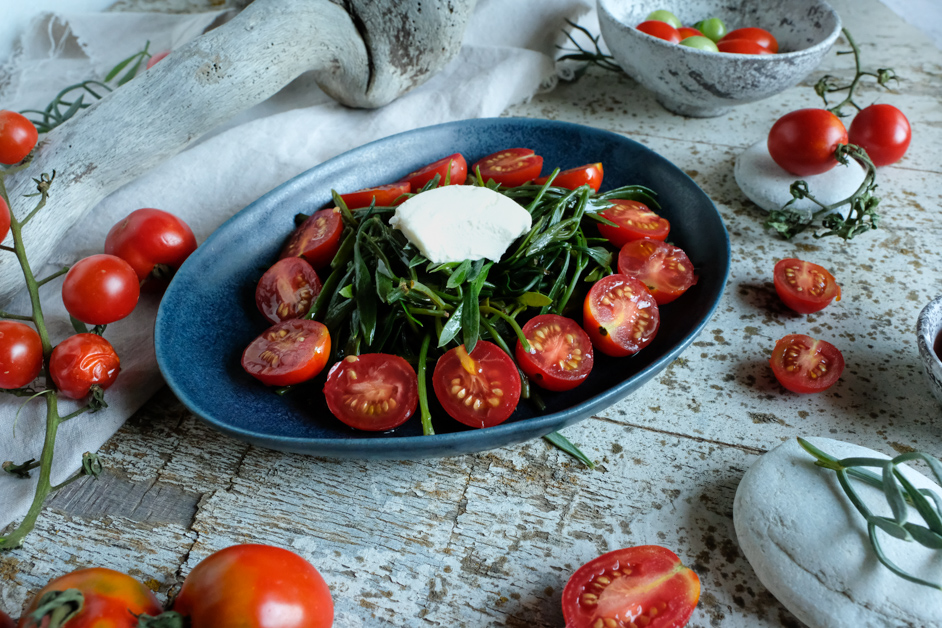
I would definitely have started with a classic, traditional “horiatiki”. But ingredients always lead the way in cooking and yesterday, I picked some fresh and tender rock samphire. Rock samphire is an edible wild plant that grows on rocks and cliffs near the sea. It’s quite salty due to the seawater, so be careful with the salt. It’s perfect for refreshing, summer salads. Experts consider samphire important for its properties and unique taste.
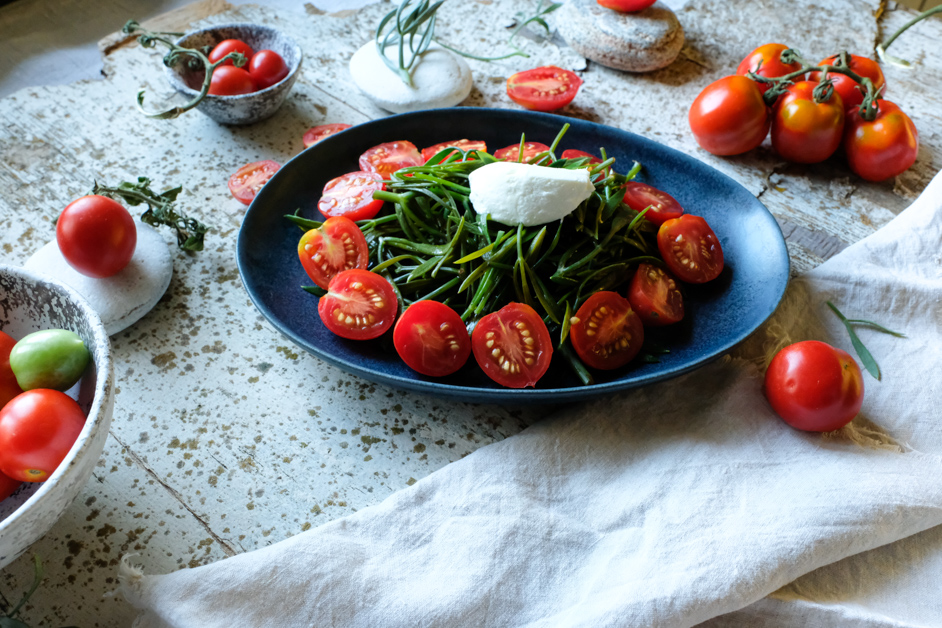
My setting for the day? Wonderful, tender, salty rock samphire on an old wooden, eaten away by the seawater board that I found near the sea and brought back home from our vacations in the Cyclades. Perfection! And of course, a bunch of vivid red tomatoes!
Ingredients
½ kg fresh rock samphire
25 cherry tomatoes
2tbsp soft goat cheese (Katiki Domokou)
5tbsp extra virgin olive oil
Juice from half a lemon
A tiny bit of vinegar
Salt
Method
I don’t think anyone needs a recipe for this super simple salad, so I’ll just list a few useful notes.
1. Pick only the most tender samphire leaves and stalks. They are the most delicious. After washing them, allow them to boil for a few minutes but keep them crisp. Strain them and add them to a bowl with iced water right away to stop the boiling process and maintain their green colour. Then mix olive oil with lemon, vinegar and salt. Spread the dressing on the samphire and keep some for your tomatoes. Let them absorb the liquids.
2. In a serving platter, place the samphire in the middle and spread cut cherry tomatoes around it. Sprinkle with the rest of the sauce.
3. Add two tablespoons of soft goat cheese on top. I like to use Katiki Domokou but you can choose any other kind you prefer.

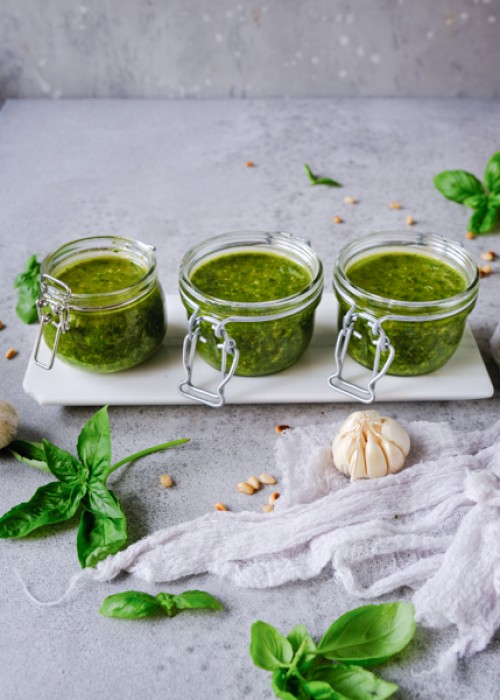
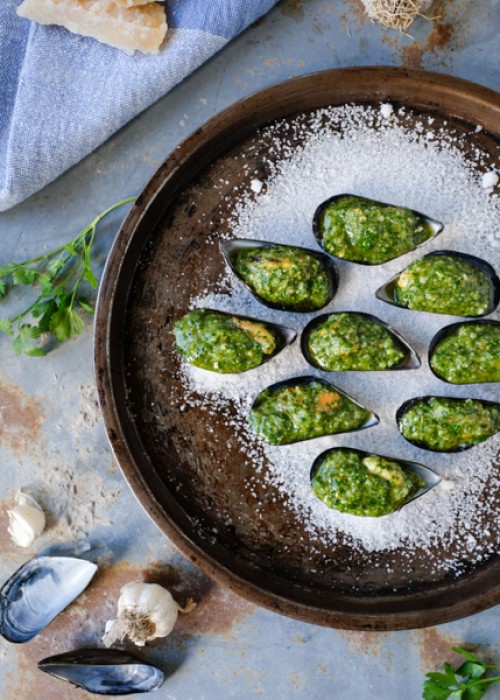

Comments